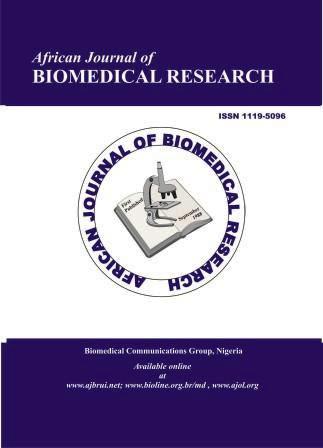Reference Values for Six-Minute Walk Test in Apparently Healthy Nigerian Adults
DOI:
https://doi.org/10.4314/Keywords:
Six-minute walk test, Six-minute walk distance, Exercise capacity, Reference value, Prediction equation, NigeriaAbstract
The six-minute walk test (6MWT) is a common utility outcome for evaluating exercise capacity in patients with pulmonary
diseases. However, there is no existent reference value for Nigerian older adults. This study is therefore aimed at establishing
reference values and equations for 45-70 years old Nigerian adults. We consecutively recruited apparently healthy adults into
this cross-sectional survey and used standard protocols for 6MWT and anthropometrics. Regression equations were developed
based on demographic and anthropomorphic data. These equations were compared to existing prediction equations. One hundred
and four participants completed two 6MWT. The average six-minute walk distance (6MWD) was 378 metres; greater in men
than women (p<0.001). The 25th and 75th percentiles were 345.10 and 408.18 metres, respectively. The variables that were
significantly associated with 6MWD were sex, age and height. We found two explanatory model equations and the model
equation for all participants is 6MWD = 297.96 + 47.41 (sex) – 1.001 (age) + 65.214 (height) where female = 0 and male = 1
with explanatory power of 41.3%. Applying other studies’ equations to our population resulted in an underestimation or
overestimation of the 6MWD. In conclusion, the average 6MWD in this Nigerian population was 378 metres. Age, height and
sex were the most significant predictors of 6MWD and the regression equations explained 41% of the variance in the distance
walked. These equations will help to improve evaluation of patients with diseases that affect aerobic capacity.










